Hayley Bennett highlights rice’s natural affinity for arsenic and what researchers are doing about it
With the green shoots of rice plants brushing against their rubber boots, rice farmers along the Colorado River in Texas waded back out into flooded fields last year for the first time since 2011. Following years of drought, the river authority had finally released the water farmers so desperately needed for irrigation. Rice is a particularly thirsty crop making empty waterways and reservoirs a serious problem for those who grow it. So it was a happy ending, albeit it one concealing something sinister lurking below the surface.
Rice grown in this region of the central southern US, extending east into Mississippi, is planted in fields that were historically sown with cotton. To kill the beetles that fed on the cotton plants, farmers sprayed them with pesticides – pesticides containing arsenic, which now contaminates the soil and water, finding its way into the roots of thirsty rice plants and, therefore, the food chain.
There’s no such thing as a safe level of arsenic, every dose you take increases your risk
Andy Meharg, Queen’s University Belfast
According to scientists involved in research on arsenic contamination, there has never been any routine testing of arsenic levels in rice and so if you pick some off the shelf in the supermarket, or one of those packets of flavoured rice cakes you’ll find in the baby food section, there’s really no guarantee of it containing a safe level of arsenic. If such a thing exists.
‘There’s no such thing as a safe level of arsenic,’ argues Andy Meharg, a researcher at Queen’s University Belfast, UK, who has been studying arsenic levels in plants for over two decades. ‘Every dose you take increases your risk.’ And in answer to whether parents should stop feeding their children rice cakes? ‘At the moment, yes.’
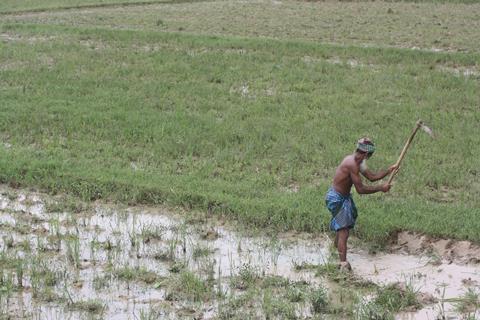
To be clear, eating a packet of rice cakes or packing the pilau in with your takeaway curry is not akin to taking a deadly dose of a 19th century poison. However, the inorganic forms of arsenic in food are toxic and carcinogenic to humans, with no threshold, which means that there’s no established dose that you could consume that you could be sure would be harmless.1 (By contrast, some organic forms of arsenic aren’t thought to be harmful whilst others are classed as ‘potentially toxic’.)
Why, though, does rice pose a special risk? To answer that, we need to understand a few things about how rice is grown. The first is that mostly, as in Texas, Mississippi and the rice paddies of Asia, rice is grown on flooded land. This dramatically increases the amount of arsenic that rice plants take up, because the waterlogged (anaerobic) conditions keep inorganic arsenic in a more mobile oxidation state, arsenite, As(III), than in non-flooded (aerobic) conditions, where arsenate, As(V), dominates. It’s possible to grow rice in dry fields, but this can increase cadmium uptake. The second, and slightly more complicated, thing to understand is that rice is a real sucker for arsenic, more so than other staple crops.
Penchant for a poison
It may seem puzzling that any plant takes up arsenic at all, since it doesn’t actually need it. David Salt, a biochemist at the University of Nottingham, UK, describes it as ‘a case of mistaken identity’. Cells in plant roots are unable to tell the difference between inorganic forms of arsenic and things they really do need.
The mix-up came to light during studies on barley seedlings in the 1970s, which showed that the more arsenate was present, the less phosphate the seedlings absorbed via their roots and vice versa.2 The two ions appeared to be competing for the same route of uptake, leading researchers to suggest a ‘common carrier’ mechanism. It turns out arsenate is hijacking phosphate transporters. Arsenite, the form more common in flooded fields, does something similar, sneaking into plant cells by subverting silicon transporters. Because rice plants need a lot of silicon to keep their leaves, stems and roots strong and to form the protective husks of grains, they inadvertently soak up a lot of arsenite.
Rice’s affinity for arsenic affects people all over the world whose diet depends heavily on the cereal; people on gluten-free diets and children tend to eat more. ‘The first food that virtually any child on the planet eats is rice porridge. That’s what we’re told to wean our children onto,’ says Meharg. Whereas children in the UK used to be brought up on mashed vegetables, it’s now common to see a six-month-old snacking on rice crackers. Moreover, Meharg suggests today’s parents favour rice products over bread, pasta and potatoes because of concerns about gluten sensitivities and ‘chemicals’ in potatoes. The arsenic issue is more urgent for babies because they eat three times as much as adults do on a by-bodyweight basis. Epidemiological studies also suggest they are more vulnerable to the effects of arsenic, which may compromise growth and development.3
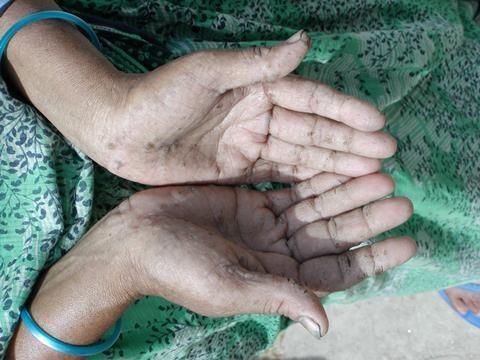
Since 2016, EU regulation has limited inorganic arsenic levels in food – to 0.2 mg/kg and 0.1 mg/kg in baby foods – but these limits are not necessarily being enforced. According to a recent study that Meharg was involved in, three quarters of rice products, from a sample of 29 rice crackers, 31 rice cereals and 13 baby rices marketed for children in the UK, contained inorganic arsenic at levels above the 0.1 mg/kg limit.4 A spokesperson for the European Commission said it is ‘the responsibility of the member states’ competent authorities’ to ensure limits are not exceeded. Meharg’s study also showed that in 79 children tested pre- and post-weaning, urine samples contained higher levels of arsenic metabolites once the children started eating solids.
Arsenic in rice is undoubtedly a problem. The question now is: what can we do about it? Meharg, for his part, has recently come up with a kitchen science solution for removing more than half of the arsenic from the grain.5 In its simplest form, this involves cooking a relatively small amount of rice in a large pan of water. Cooking with a 12:1 water:rice ratio gets rid of around 53% of the inorganic arsenic in white rice and 61% in wholegrain rice, which has a higher arsenic content to begin with. ‘Even better is to pre-soak your rice overnight in a large volume of water, rinse it, then cook it in a large volume of water and rinse it again,’ Meharg advises. ‘We’re applying that industrially as well, in places, like Bangladesh, [where] people eat parboiled rice, which is soaked and pre-cooked.’
In the same study, his team showed that a percolating method using a condensing tube, in which recycled water flows continuously through the rice, gets rid of about 59% and 69% for white and wholegrain rice respectively. For home cooks, an old-fashioned coffee percolator does the same job, although the study shows it only removes about 49% of the arsenic, with no significant difference between wholegrain and white rice.
Against the grain
Removing arsenic from the grain after its grown is one approach, but could there be a way to reduce the amount of arsenic that gets into the grain in the first place? One possibility is applying fertilisers containing silicic acid, which cross-competes with arsenite for silicon transporters, thereby partially blocking its entry route. However, Salt had another idea. It began in the 1990s, when he was working with the Stanford synchrotron particle accelerator, blasting mustard plants with x-rays.6 ‘[It] allowed us to look into the plant,’ he recalls. ‘We showed that when you feed plants arsenate and then you look into the roots and the leaves, you find that all the arsenate is now mysteriously arsenite.’ They concluded that plants must be able to naturally reduce arsenate to arsenite in their tissues. This benefits plants, Salt explains, because it provides a way of storing arsenic out of harm’s reach or getting rid of it completely. Stored arsenite is mopped up by plant molecules called phytochelatins, which form complexes with the toxic ion, and then transported to cell compartments in root cells, keeping it away from the edible parts. The rest is sent back to the soil via transporters in root cells.
When you feed plants arsenate and then you look into the roots and the leaves, you find that all the arsenate is now mysteriously arsenite
David Salt, University of Nottingham
What Salt wanted to do was to find out how plants reduce arsenate to arsenite and if that ability could be enhanced through breeding. Before long, another group at Wayne State University in Detroit, US, hit upon an enzyme that could carry out this crucial reduction. They had combed the plant genome for sequences matching that of known yeast enzyme that reduces arsenate to arsenite – a good strategy, notes Salt – leading them to arsenate reductases in plants including rice. It was a red herring though. Whilst these enzymes could indeed reduce arsenate to arsenite in the test tube, they didn’t do it in vivo; Salt’s team showed that de-activating the enzymes in plants made very little difference to how they processed arsenic.7
Next they tried genome wide association mapping: using natural variations in arsenic accumulation across entire populations of plants to track down the genetic changes responsible for those variations. ‘It sounds complicated but it’s actually pretty straightforward,’ says Salt. ‘What you’re able to do in a set of plants is to look across the genome for changes in the sequence, so we did this and we identified 250,000 small changes in the sequence. Then we measured the arsenic levels in those plants and asked the statistical question: “Is there a particular change in the genome which is common in all the plants that had high arsenic?”’
At this point, they were working with thale cress, Arabidopsis thaliana, a weed used by scientists as a model plant, and had gathered hundreds of accessions (collected varieties) from different habitats. The answer to their question was yes – there was a change common among all the high-arsenic accumulating varieties of Arabidopsis. After growing 349 different varieties, spiking their feed with arsenic and then painstakingly collecting and testing their leaves for arsenic using inductively coupled plasma mass spectrometry (ICP–MS), they were able to narrow down their search to a short stretch of sequence on chromosome 2.
In December 2014, they published a paper describing a new arsenate reductase enzyme, which they named HAC (for high arsenic content) 1.8 The protein seemed to accumulate in roots, where it reduces arsenate to arsenite and sheds it to the soil. Deactivating HAC1 caused plants to accumulate more arsenic in their shoots. And when the researchers looked for matches in the rice genome, they found them. Last year, Salt and his colleagues showed two rice genes very similar in sequence to HAC1 could give bacteria back the ability to reduce arsenate if their own arsenate reductases were not functioning.9
The story was not that straightforward, however. Unlike the bacteria, plants that lacked functioning HAC1 proteins were still capable of reducing arsenate, meaning alternative reducing mechanisms must be at play, besides other plant processes involved in the uptake of arsenic. It’s only when rice fields are periodically drained that arsenate reductases are thought to become important in arsenic accumulation, because in flooded fields arsenic is mostly present as arsenite.
Which begs the question: are growing conditions actually a more important influence on arsenic uptake than genetics? In 2014, Salt had collaborated with Meharg on the publication of an additional genome wide association study – in 300 rice cultivars grown at four different field sites.10 They’d identified five portions of the rice genome that seemed to be involved in arsenic accumulation, but concluded that environmental factors such as climate and soil chemistry were probably playing a bigger role in how much arsenic the plants took up. Genetic differences could only account for between 39–50% of the variation in grain arsenic levels, the study suggested. A 2015 study of over 1700 rice cultivars revised that estimate upwards to around 60%,11 but there’s still a strong environmental component. ‘There’s a large genetic times environment interaction,’ says Meharg. ‘So when you grow rice from one part of the world in another part of the world, you don’t see the right effects and when you take that good genotype to another place 100 miles away, it doesn’t work.’
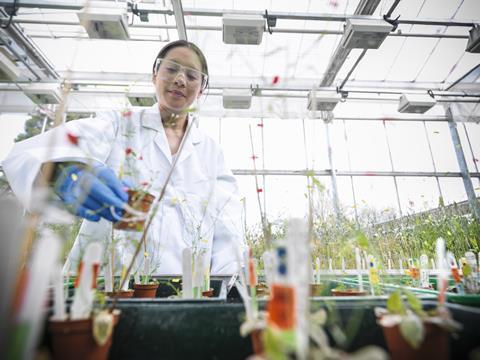
Where, then, does this leave any potential rice breeding programme? Is there enough natural variation in the rice genome to make breeding of low-arsenic varieties a possibility? Salt thinks so and the process could be sped up using modern molecular techniques that allow breeders to keep track of the genes they’re interested in. The trouble is that it’s looking increasingly like there is no single gene that controls a significant portion of the arsenic accumulation in rice, which leaves plant breeders the tricky task of transferring multiple favourable gene variants into premium rice varieties.
Sourcing a safer cereal
Meanwhile, Meharg is getting ready to publish a global survey of arsenic levels in existing rice varieties. Based on this, he says, he could tell baby manufacturers ‘where to go to get ultra-low arsenic rice’. Currently, though, arsenic testing is so limited and data so scarce that there’s little impetus to source rice containing lower levels of arsenic.
Julian Tyson, a chemist at the University of Massachusetts Amherst, US, says reliable tests – which use ICP–MS – just aren’t accessible to growers or rice mills. So in collaboration with the non-government organisation Chemists Without Borders, he’s developing a test (see box) simple enough to be conducted by undergraduate students, even in resource-poor rice-growing regions. But that doesn’t mean these tests couldn’t also be used by importers or food standards authorities anywhere in the world. It’s his hope that, through accessible testing, agronomists will gain the information they need to change growing practices for the better. ‘If it’s possible to say on a global scale, look, as a result of not using flooded conditions or using different varieties, here’s the evidence that the arsenic concentration is going down, that would be really useful.’
As for the old cotton farming regions of the US, Tyson says that while you might expect arsenic levels to decrease over time with continuous growing and harvesting or rice, the evidence he has seen so far isn’t very helpful. ‘There’s one data point, as far as I’m aware,’ he says. ‘They analysed some archived rice samples, 30 years old. Turns out the concentrations were the same as they are today.’
Testing rice for arsenic
The most reliable way of testing for arsenic in rice uses high performance liquid chromatography (HPLC) with ICP–MS. In 2015, Jorg Feldmann’s group at the University of Aberdeen, UK, published a paper on a field test kit for arsenic in rice.12 It’s this filter-strip test, based on a colour-changing reaction between mercuric bromide and arsine gas, that Julian Tyson’s team is trying to adapt.
It’s not without its challenges. Getting a detectable level of inorganic arsenic in what’s extracted from ground and boiled rice is difficult and there’s interference from white, starchy material in the rice. In addition, to control the rapid reaction that generates the arsine gas, Feldmann’s team uses borohydride, in tablet form, containing 10% borohydride. Tyson says these tablets are not readily available enough for communities in some rice-growing regions. His solution is to stir borohydride into agar gel. ‘Now we’ve got little jellies that we drop in and the reaction seems to be under control,’ he says. ‘So we’re not relying on [the one company] that has these tablets.’ Although the test isn’t as accurate as the HPLC–ICP–MS method, it could provide a screen for samples requiring further scrutiny.
References
1 F Cubadda et al, Sci. Total Environ., 2017, 579, 1228 (DOI: 10.1016/j.scitotenv.2016.11.108)
2 C J Asher and P F Reay, Aust. J. Plant Physiol., 1979, 6, 459
3 F Cubadda et al, Sci. Total Environ., 2017, 579, 1228 (DOI: 10.1016/j.scitotenv.2016.11.108)
4 A J Signes-Pastor et al, PLoS ONE, 2017, 12, e0176923 (DOI: 10.1371/journal.pone.0176923)
5 M Carey et al, PLoS ONE, 2015, 10, e0131608 (DOI: 10.1371/journal.pone.0131608)
6 I J Pickering et al, Plant Physiol., 2000, 122, 1171 (DOI: 10.1104/pp.122.4.1171)
7 W Liu et al, PLoS ONE, 2012, 7, e42408 (DOI: 10.1371/journal.pone.0042408)
8 D-Y Chao et al, PLoS Biology, 2014, 12, e1002009 (DOI: 10.1371/journal.pbio.1002009)
9 Shi et al, Plant Physiol., 2016, 172, 1708 (DOI: 10.1104/pp.16.01332)
10 G J Norton et al, PLoS ONE, 2014, 9, e86985 (DOI: 10.1371/journal.pone.0089685)
11 S R M Pinson et al, Crop Sci., 2015, 55, 294 (DOI: 10.2135/cropsci2013.10.0656)
12 E Bralatei et al, Anal. Chem., 2015, 87, 11271 (DOI: 10.1021/acs.analchem.5b02386)
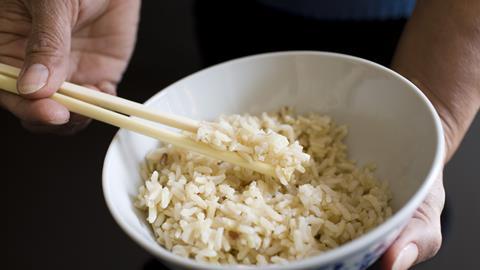
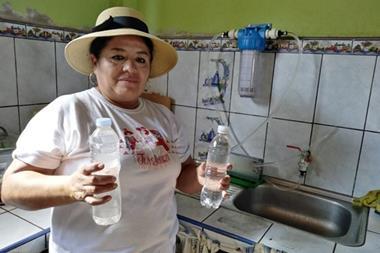











No comments yet